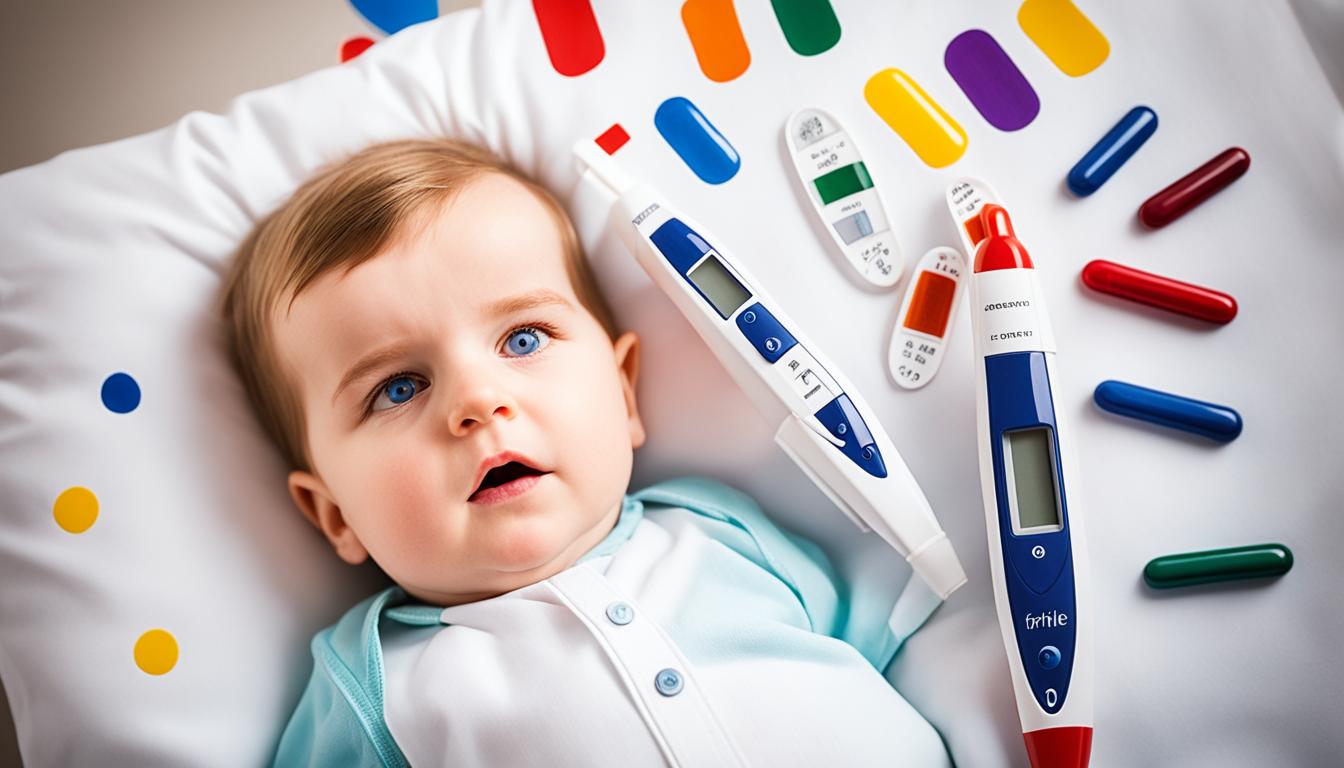Febrile seizures are the most common type of childhood seizures, happening in 2%-5% of kids. They mostly hit children from 6 months to 6 years old, with toddlers at higher risk. A child might lose consciousness and have jerky limb movements during these, lasting a few minutes.
Parents often find febrile seizures distressing, but they rarely harm the child and won’t cause brain damage. Only a small number, around 3%, might later experience epilepsy.
The exact reasons behind febrile seizures are not clear, but we do know some things. Having the first seizure before 15 months, it being close to the start of a fever or during a low-grade fever, and issues like delayed development or a family history can increase chances.
Diagnosing a febrile seizure means ruling out other seizure causes and checking for a fever when it happens. Usually, it’s in children with temps over 38.5 degrees Celsius. If a seizure lasts over 5 minutes, it’s urgent to seek a doctor’s help.
Usually, febrile seizures don’t need medication. But if they go on too long, doctors might use rectal diazepam (Valium). Preventing further seizures is not always possible, but they might happen less frequently as the child grows.
No sure way exists to prevent febrile seizures from happening again. But the likelihood of them reoccurring usually decreases as the child ages.
Key Takeaways:
- Febrile seizures are the main type of seizures in young kids, affecting 2%-5% of them.
- They mostly hit kids aged 6 months to 6 years, with toddlers at higher risk.
- The child might lose consciousness and have spastic limb movements for a few minutes.
- Most febrile seizures are not dangerous and don’t lead to brain damage. Only 3% might get epilepsy.
- Treatment focuses on controlling the seizures and managing the fever. Drugs are not often needed.
Diagnosis of Febrile Seizures
Febrile seizures, or convulsions in children, are a big worry for parents. Healthcare providers diagnose them by checking for fever with the seizure.
If a child’s temperature is over 38.5 degrees Celsius, they might have a febrile seizure. The child could lose consciousness and have jerky movements, usually involving all four limbs.
These seizures are short, often lasting 2-3 minutes but never more than 10. For any seizure lasting over 5 minutes, get help right away to keep the child safe.
Febrile seizures pose risks such as falling or choking. Parents should make sure the child is safe during a seizure, removing any dangers and placing them on their side.
Distinguishing between febrile seizures and epilepsy is key, because febrile seizures are not caused by something else. They only happen with a fever present.
To diagnose a febrile seizure, other causes of seizures must be ruled out. It’s crucial to confirm a fever at the time of the seizure. Knowing these details helps in managing and treating febrile seizures effectively.
| Febrile Seizure Symptoms | Febrile Seizure Duration |
|---|---|
| Loss of consciousness | 2-3 minutes or less |
| Jerky movements of all limbs | Rarely more than 10 minutes |
| Risk of injury from falling or choking | – |
Risk Factors and Long-Term Effects of Febrile Seizures
Febrile seizures happen to kids often, about 2%-5% of them. Luckily, most are not dangerous and don’t hurt the brain. But, some things can make kids more likely to have these seizures again.
Risk Factors:
- Being less than 15 months old when the first seizure happened
- Having a seizure when the fever starts or when the body’s temperature is not very high
- If someone in the family has had febrile seizures or epilepsy
- Slower growth and learning than usual
Kids with these factors might have more seizures later. Still, most won’t develop epilepsy, even with these risks.
Long-Term Effects:
Studies show kids with febrile seizures usually do well in school. They perform as good as brothers or sisters who didn’t have these seizures. Febrile seizures themselves don’t harm the child’s learning or thinking abilities long-term.
In very rare cases, if seizures last over an hour, they could lead to issues later or epilepsy. But, let’s remember, this is very rare.
Only about 3% of kids with febrile seizures get epilepsy. If a child has long seizures or ones that only involve a part of the body, their risk goes up a little. But, kids at low risk have about the same small chance as anyone else of getting epilepsy.
Febrile seizures are often harmless. They don’t impact the child’s health or mind. Understanding the risks and possible outcomes helps parents and doctors in caring for the child.
Conclusion
Febrile seizures often happen in kids from 6 months to 6 years old. They might scare parents, but these seizures are usually not harmful. They won’t cause any brain damage.
The exact reason for febrile seizures is not known. But, we do know some things that make them more likely. For example, they can happen when a child has a low fever. Also, if someone in the family had these seizures or epilepsy, the risk goes up.
Tricks to stop febrile seizures from happening again are not clear yet. But, as children grow, these seizures often happen less. They usually don’t affect how smart or healthy a child is in the long term.
Doctors are always looking for new ways to treat febrile seizures. One hope is that stem cell therapy could be a game-changer. This is promising news for the future of treating these seizures.

